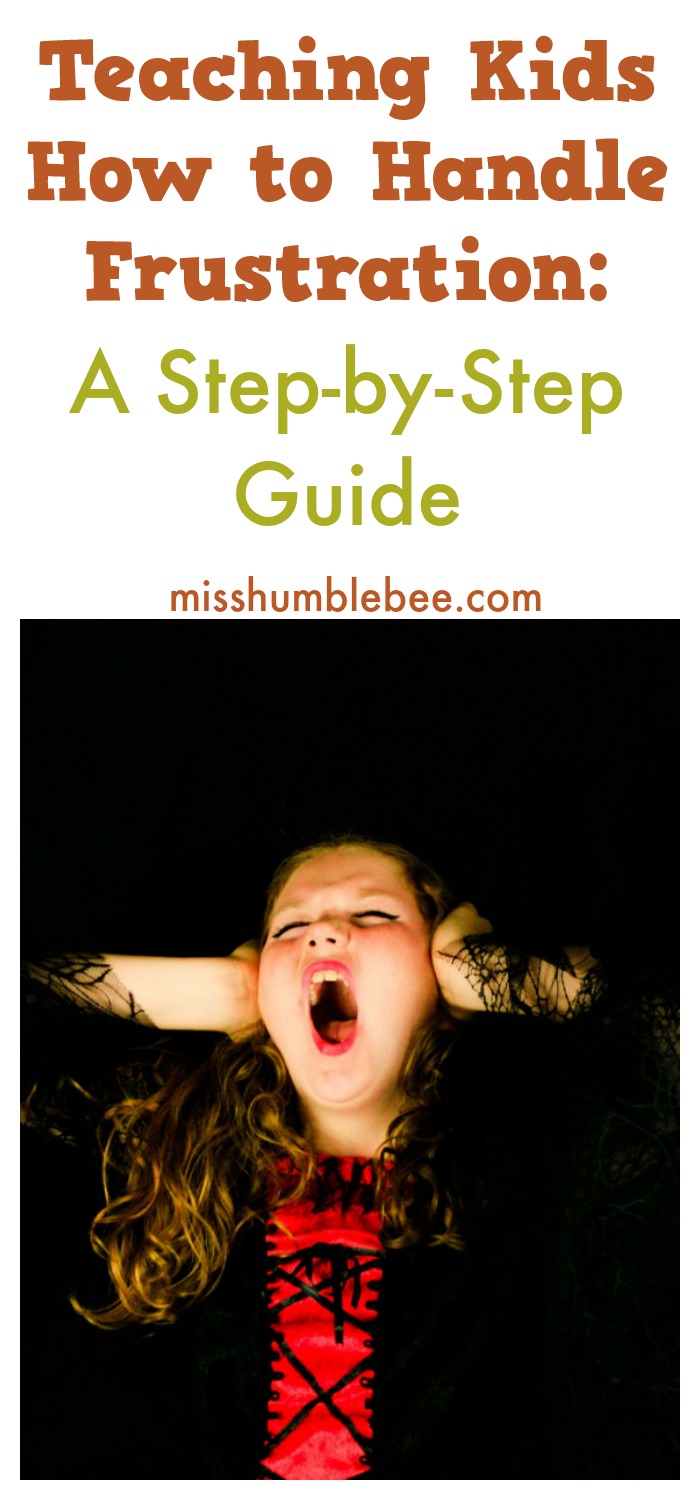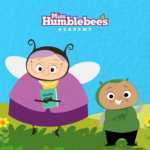Below: Frustration is a normal and regular part of life. Teaching kids how to handle frustration in a healthy way will help them throughout their lives.
As adults, we all understand what it feels like to be frustrated. We encounter frustrations big and small every day, from getting behind a slow driver when we’re already running late to telling our kids to do sometime five times before they even hear us.
Although we don’t always handle our frustration in the most productive way, by the time we’ve reached adulthood, many of us have learned to both recognize the signs of frustration and develop coping mechanisms to release that frustration in an appropriate way.

Teaching Kids How to Handle Frustration: A Step-by-Step Guide
Children, on the other hand, have not learned either of these important skills. They are not skilled at identifying their emotions, nor do they know the best way to handle those emotions when they do come up.
Thankfully, these skills can be taught. Teaching children to pay attention to several factors can help them recognize when they are likely to feel frustrated and also what that frustration feels like. Once they are able to identify when they’re frustrated, they can be taught several ways to release that frustration.
1. Teach your child that emotions aren’t bad
We often lump our emotions into two categories: Good emotions and bad emotions. “Good” emotions, such as happiness, are the emotions we want to have, while “bad” emotions, like anger, are the ones we want to avoid.
In truth, there’s no such thing as a bad emotion. All emotions are valid and all can be useful in various situations. It’s the expression of our emotions that can sometimes get us into trouble.
By teaching your child that it’s okay to feel a range of emotions, you can help him understand that it’s normal and okay to feel frustration. He doesn’t need to push those emotions down or try to hide them. Instead he needs to learn how to express them in a healthy way.
2. Help your child discover her triggers
Just like adults, kids are more likely to become frustrated when certain factors are in play. The tricky thing is that everyone is effected differently by different factors, so you need to help your child figure out what her particular triggers are.
Perhaps your child gets more easily frustrated when she’s tired or hungry. Maybe she gets frustrated if she feels like she has no control over a situation.
Other common triggers for kids include transitions, unexpected changes in plans, changes to their typical schedule, and encountering new social situations.
Although it may be hard for very young children to identify when these factors are in play, it’s still helpful to identify them and talk with your child about them. The more aware your child becomes, the easier it will become for her to realize when these triggers are present.
3. Teach your child to listen to his body
As an adult, you know that your emotions affect you physically. Maybe you get headaches when you’re stressed out or a stomachache when you worry. Children have not yet learned this, but it’s a critical piece of the puzzle to helping them identify when they begin to feel frustrated.
When you see your child in the early stages of frustration, stop what you’re both doing and ask him how his body feels. Is he making fists? Does his belly feel tight? Is he scrunching up his shoulders? Make a note of how he feels physically and do this exercise several times over a week or two. It won’t take long to see patterns emerge.
These physical manifestations of frustration will likely occur every time your child feels frustrated. If your child knows what to look for physically, he’ll be far more likely to understand that he’s starting to become frustrated.
4. Tell your child to step back from the situation
When your child has learned to identify when she’s feeling frustrated, you can help her learn skills to deal with that frustration in a constructive way.
The first is to simply take a step back. Although we mean this figuratively, it may be helpful for young children to do it physically as well. Backing away from whatever the situation is creates space. Just as when we get in a fight with someone we need a little space from them to calm down, stepping away from a frustrating situation can also help your child calm down.
5. Teach your child to breathe
As mentioned earlier, our emotions are closely tied to our physical state. When your child feels frustrated, she will feel it in her body. It only makes sense then that to calm down emotionally, she must also calm down physically.
When your child is in a calm state of mind, teach her how to take deep breaths. Count to four while she breathes in. Encourage her to fill her lungs (she’ll be able to watch her chest rise). Count to three while she holds the air in her lungs. Then count to four as she slowly releases the air.
Once she’s mastered this, teach her to also concentrate on relaxing her muscles while she takes her deep breaths. Explain that when she feels herself becoming frustrated, she should take a step back and try this breathing exercise. It will help her regain control both physically and emotionally.
6. Talk about it
Once your child has regained a bit of control, encourage him to talk about his frustration. Help him identify the source and brainstorm possible solutions.
By taking the time to teach your child these skills, you’ll help her learn how to deal with frustration, as well as other emotions, in a healthy way. The best part about taking the time to teach these skills is knowing that they will help your child through her entire life.
For More on the Topic:
How to Teach Frustration Tolerance to Kids










